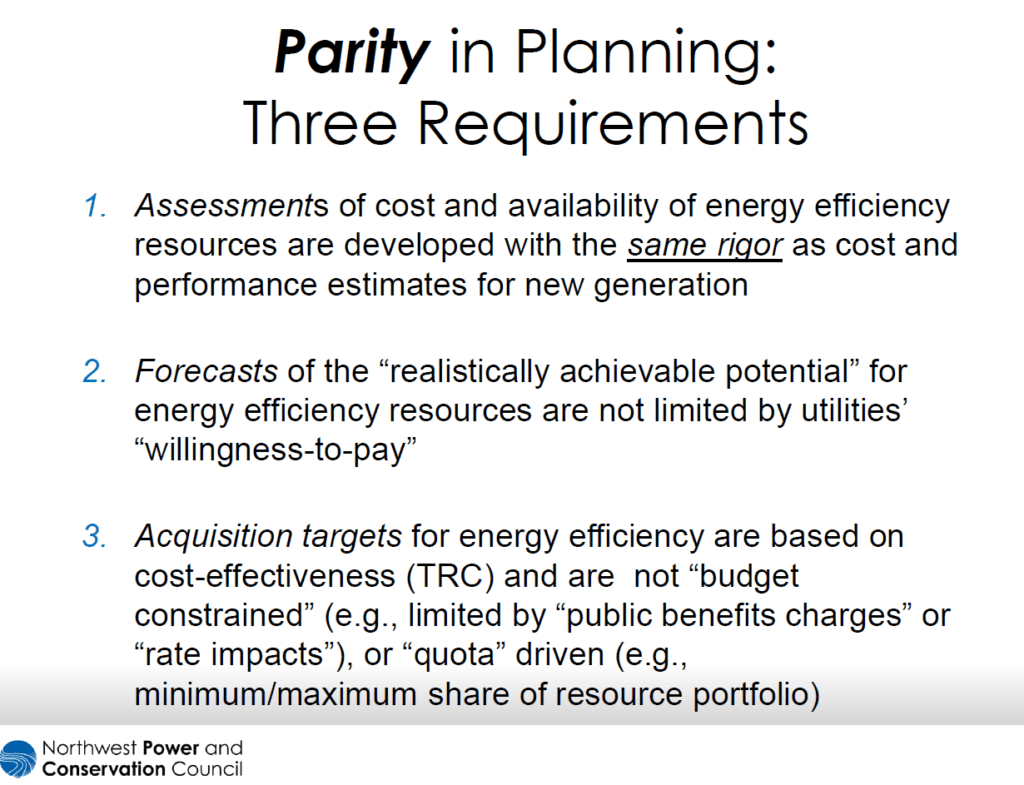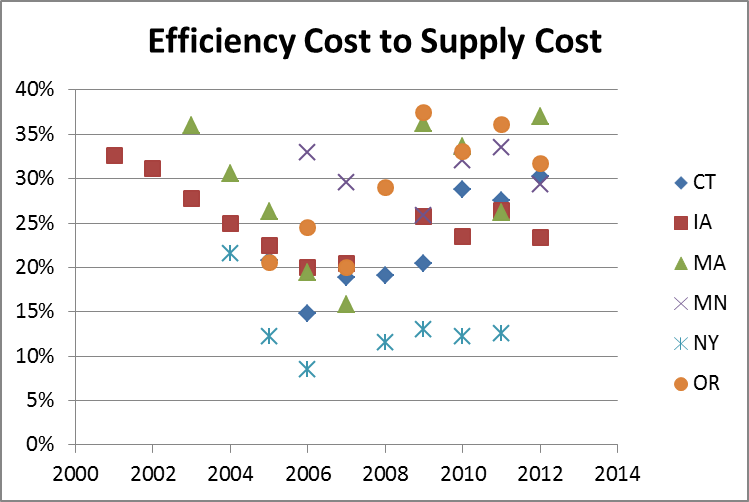
A few weeks ago in Cost of Saved Energy, I received some great feedback and a few questions. The questions involved energy efficiency potential studies and what are best practices. You know what they say about thinking outside the box – in this case I don’t know what the box is so I have no problem going off the ranch.

I started with the Ten Pitfalls of Potential Studies by Regulatory Assistance Project (RAP) which didn’t answer many questions on this topic, but it did release an avalanche of unchained thought.
Right out of the gate, pitfall number 1, Defining “Achievable” Savings, made me think, “What is the real purpose of a potential study anyway?” The answer is, in an ideal utility-of-the-future world, we won’t need them.
A very brief recap of savings potential:
- Technical potential is the summation of savings from implementing all things that save energy, regardless of cost effectiveness.
- Economic potential is technical potential with a cost-effectiveness filter. Cost effectiveness arguments could fill a university library.
- Achievable potential is economic potential filtered by “practical realities” and “market barriers”.
Achievable Potential
My translation of achievable potential: savings constrained by old-school rationalization of market constraints. We probably aren’t close to achievable potential. After reading the above referenced report, I circled back to foggy memories past.

I hope he doesn’t mind my saying so but I spoke with Tom Eckman at last week’s ACEEE National Symposium for Market Transformation. Tom is rightfully perceived as one of the nation’s rare-air thought leaders on valuing energy efficiency against supply side alternatives. Last fall, I saw Tom’s interesting insights as he discussed a different approach to determining energy efficiency’s value at ACEEE’s National Conference on Energy Efficiency as a Resource.
Tom’s EE resource presentation included the slide to the left.
The parity he is describing is parity between efficiency and supply side resources. See number 2? That is what I am talking about when I say we probably aren’t close to achievable potential.
A Shopping List v a Potential Study
In today’s environment, potential studies are more like buying groceries and libations for a cookout or holiday meal. Some things are more expensive than others, but the guests won’t be pleased with PB&J or raisin bran for main course. We’re in the Midwest man, and that means MEAT[1]!
Besides, if a firm really did an achievable potential study without constraints of #2 (slide above), it would seem to be a conflict of interest in today’s environment.
What are you talking about, Jeff?
I’m talking about achievable potential. “Achievable” potential in today’s environment is a holdover from the 1970s-1980s “public benefits” mindset. That is, utilities have a monopoly market and therefore must do the right thing and offer EE to their customers.
We should have a different term than “achievable” potential. That would be (is) “acceptable potential”, as in, an acceptable level for impacts for which all stakeholders will agree to disagree.
Potential studies, therefore, extrapolate from history acceptable portfolio targets (or cookout fare) that everyone can live with. The conflict of interest would be this: the firm doing the study actually determines acceptable potential, aka “achievable” potential as it is known today. Real achievable potential would be unacceptable because under today’s regulatory environment, (bold, italics, and underlined for extra emphasis), it would make life more difficult for the utility and it would further erode revenue, at least in the short term, depending on decoupling and those sorts of state-by-state factors. Per Tom Eckman’s slide above, “realistically achievable potential” is limited today by willingness to pay.

Efficiency Cost to Supply Cost
A New way to Think
A few weeks back in Cost of Saved Energy, I demonstrated with retail electric prices reported by the Energy Information Administration, and a couple reports by ACEEE, that the cost of energy saved versus the cost of supply is barely 1:3. For a refresher, the data are repeated again in the chart.
Unleashing the hounds of energy efficiency would really occur if utilities were allowed the same (or much closer to the same) revenue on energy saved as they get for energy delivered. Need for potential studies: poof! The utility would keep going until the cost to save energy rose to the cost of supplying it. This is only a crazy idea to people living in boxes. One such concept has already been proven over many years until, in my opinion, regulators in their boxes ground it down until they surrendered to conventional thought and conventional acceptable potential.
What a pity.
Furthermore, a highly regarded professional in the evaluation community led an attribution, or net-to-gross (NTG), assessment of the program and found the program to be very successful as well, with spillover exceeding freeridership. The regulators dismissed it as heresy. Believe me when I tell you, I am not making this up.
Want it or not?
It’s right there for the taking, but some sacred cows will need to be sacrificed. There are plenty of boxes available for torching up a good fire to burn some burgers. MEAT! Do we want it or not?
Some places are rediscovering this wheel. I will discuss this more next week, as promised last week.
[1] I’m fine with vegetarian things, but I like to make fun of our culture here.
